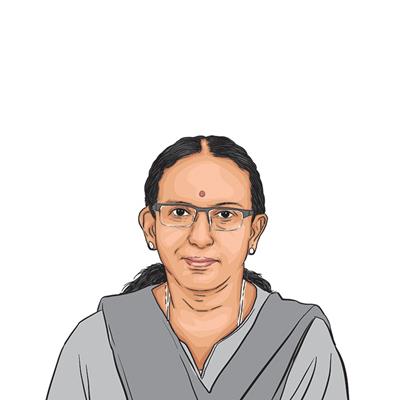Opinion How Maharashtra is reforming its urban governance model
Putting people first as part of the Aspirational Cities Programme is a step in the right direction. Bringing a sense of competition amongst the cities for urban governance will catapult the state into a trillion-dollar economy
 This effort by the Government of Maharashtra is strategically contextualised with the “Viksit Bharat” vision for India in 2047. ( AP/File)
This effort by the Government of Maharashtra is strategically contextualised with the “Viksit Bharat” vision for India in 2047. ( AP/File) India is experiencing rapid urbanisation. Therefore, it is important to understand the pattern of this growth and its effect on the population. Urban India is undergoing a major transformation with an inward net movement of people for better livelihood opportunities. Around 590 million people would live in the cities by 2030. While cities constitute about 3 per cent of the land in the country, they generate 70 per cent of the Gross Domestic Product (GDP) and contribute substantially to economic growth and opportunities. There is a robust relationship between the index of cities’ liveability and the country’s GDP per capita suggesting that long-term growth is only feasible if the city attributes in terms of providing equitable access to basic services, residences, and improved economic management are woven seamlessly through digital service delivery platforms.
Maharashtra reported the largest share of the urban population of India (13.5 per cent) as per Census 2011. The share of the urban population in Maharashtra was 45.2 per cent, much higher than the national figure of 31.1 per cent. Maharashtra also reported the largest number of slums that are home to more than 11.8 million people living in these informal settlements including 17 million children and adolescents, comprising 34 per cent of the urban population.
Cities in Maharashtra and other states continue to grapple with challenges and pressures relating to basic infrastructure, air pollution, deficient infrastructure, social inequities, large informal sector (involving women and children), frequent mobility and migration, with increased vulnerabilities to disasters and climate change. These challenges emanate from poor urban planning.
This leads us to question existing models and the need to reimagine urban governance models. Cities require a holistic solution to problems instead of a piecemeal approach by individual departments.
A review of the strategies adopted by urbanised nations across the globe suggests they have invested in strategic thinking and investment, including private sector participation, and integrated, and coordinated actions across agencies. This can be possible with the strong role played by the political leadership — who have been the backbone of this change.
It is in this context that Maharashtra has conceptualised and initiated the Aspirational Cities Programme (ACP) modelled on the lines of the Aspirational Districts initiative of Niti Aayog. The ACP is based on three priority areas that will define the city’s growth paradigm: Integration of inclusive urban development that involves all development sectors thus bringing an integrated approach to urban programming; adoption of scientific data methods for assessing and monitoring outcomes of both state and central schemes; enhancing the voice and participation of citizens in civic affairs through physical and digital means.
The ACP is set to focus on improved governance, address persistent civic issues, and increase funding avenues for the urban local bodies. Property tax — the main tax revenue of urban bodies — needs reform in property assessment by delinking it from the reasonable rental value method and adopting the market value of the property as a base for assessment. Provisioning adequate potable tap water to all households by taking advantage of the ambitious Jal Jeevan Mission is part of the ACP agenda. Except for 56 cities, the rest of the cities and towns in Maharashtra fall short of the suggested benchmark of 135 litres per capita per day recommended by MoHUA.
The ACP has identified 57 cities that have been proposed for the programme. During the selection process, the cities were individually ranked based on their own revenue and other services such as tap drinking water connection per household, rate of completion houses as a part of the Pradhan Mantri Awas Yojna, Garbage Free Cities (GFC) star ranking and population of backward classes in the city. Low tax and non-tax revenue of the urban local bodies reflect on the reduced revenue per capita and the standard of living of its residents. Service level benchmarking was done for the cities based on the data collected on the Performance Assessment System of the Government of Maharashtra. The performance of the 57 selected cities would be monitored and ranked quarterly through a standard digital monitoring platform with indicators on the themes of — urban infrastructure, education, urban services, skill development, and climate change as of now. This would in turn enable the state government to act with speed, take strategic policy decisions and make necessary fund allocations to enable the growth and development of the less progressive cities for an impactful boost in the state’s economy.
This effort by the Government of Maharashtra is strategically contextualised with the “Viksit Bharat” vision for India in 2047. Putting people first as part of urban development is a step in the right direction. Bringing a sense of competition amongst the cities for urban governance will catapult the state into a trillion-dollar economy as well as usher in ease of living in the ever-expanding urban space. It is time to accept the reality that New India is moving from its villages to the cities and therefore, the need for renewed thinking and policies that are citizen-centric.
Devara is a civil servant, and Chandrasekhar is from UNICEF. Views expressed are the writers’ and do not represent the views of the organisation






